Turtle Behavior and Life History


| These are pictures and videos that illustrate some of the interesting behavior and or natural history of turtles from California and around the world. This is not an attempt to illustrate everything, only what is depicted elsewhere on this website. |
||
| Basking | ||
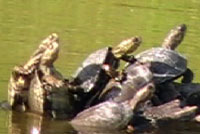 |
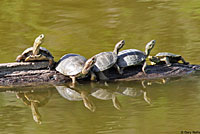 |
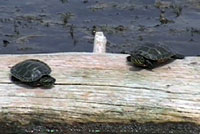 |
| This video shows a bunch of Western Pond Turtles competing for basking space on a pond and diving in when they thought I was a threat. | Turtles, like these Western Pond Turtles, spend much of their time basking in the sun. They prefer to haul out on objects, such as rocks and fallen logs, on or next to their pond, so they can easily escape into the water if necessary. | In a short video, Western Painted turtles bask on a log and retreat into the water. |
 |
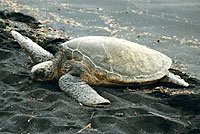 |
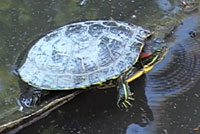 |
| When basking spots are scarce, turtles often pile onto each other, like these Texas Cooters. | Sea turtles come on to the beach to breed, and sometimes to bask in the sun, like this Hawaiian Green Sea Turtle. | In this video, Red-eared Sliders bask, swim, and slide back into a pond. |
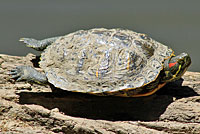 |
||
| This Red-eared Slider is holding its legs out more parallel to the suns rays to warm them up more efficiently. |
||
| Movement | ||
 |
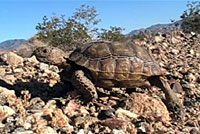 |
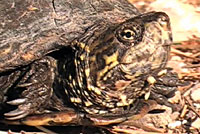 |
| This is a short video of an Olive Ridley swimming around in a large aquarium. | In this video, a young Mohave Desert Tortoise walks along a rocky wash in the Mohave desert. | In this short video, a Desert (Sonora) Mud Turtle slowly pokes its head out of its shell and looks around for several minutes before quickly returning back into the shell. |
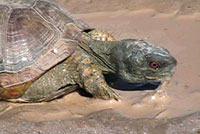 |
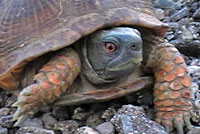 |
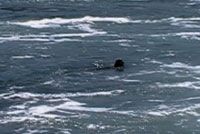 |
| In this short video, a bunch of Desert Box Turtles soak and drink in muddy rain puddles in the morning. |
In this short video, a Desert Box Turtle crosses a road and wanders into the brush in the afternoon. | This video shows Green Sea Turtles surfacing while feeding near the mouth of the San Gabriel River. About every 5 minutes I saw one of these turtles surface to breathe for just a few seconds, but there was no way to tell when and where one would come up, which made it difficult to photograph them. |
| Self Defense | ||
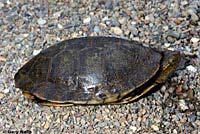 |
 |
 |
| Turtles, like this Western Pond Turtle, pull their limbs and head into their shell when they feel threatened in order to protect these vulnerable parts. | A Yellow Mud Turtle retreats into its shell. | This juvenile Texas Tortoise has pulled its head and legs into its shell, covering its head with its legs. |
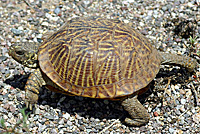 |
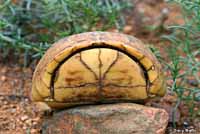 |
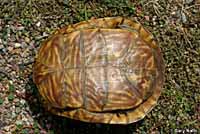 |
| Box Turtles have a hinged shell that helps to protect them when they retreat into their shell. |
||
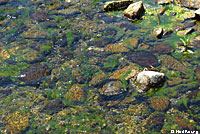 |
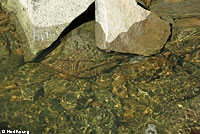 |
|
| Turtles are good at lying still on the bottom of a pond or creek to avoid detection. Both of these adult Southwestern Pond Turtles turtles were tracked with radio receivers to where they were hiding in shallow creeks. Both are very well camouflaged and could easily be overlooked. © Neil Keung |
||
| Tortoise Burrows | ||
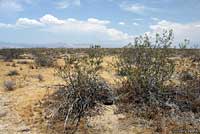 |
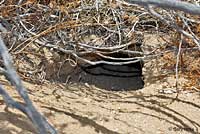 |
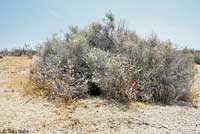 |
| Desert Tortoises spend much of their lives in burrows which they dig under desert shrubs, as you can see here. | ||
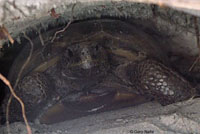 |
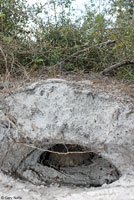 |
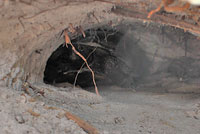 |
| Gopher Tortoises in their Burrows | ||
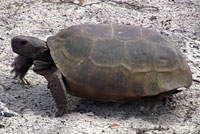 |
 |
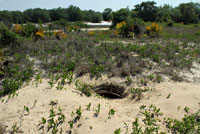 |
| In this video, we see a Gopher Tortoise in Florida walking into the brush and down into its burrow on the other side of the brush. Eventually it turns around and we can see it staring out of the mouth of the burrow. |
In this video, an adult Mohave Desert Tortoise crawls back into its summer burrow, kicking dirt out behind it. |
Gopher Tortoise burrow, Florida |
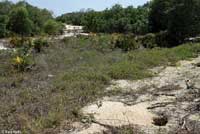 |
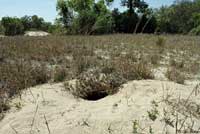 |
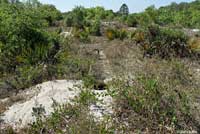 |
| Gopher Tortoise burrow, Florida | Gopher Tortoise burrow, Florida | Gopher Tortoise burrow, Florida |
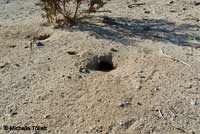 |
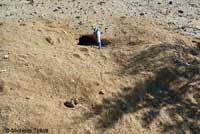 |
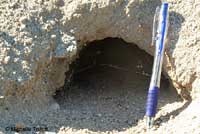 |
| Desert Tortoise burrows © Michelle Tollett | ||
| Reproduction | ||
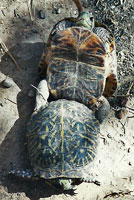 |
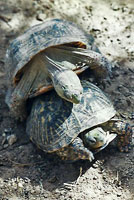 |
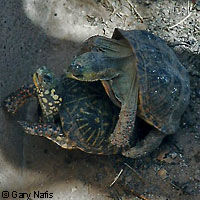 |
| A pair of mating Desert Box Turtles in New Mexico |
||
 |
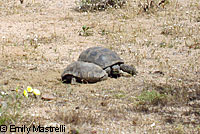 |
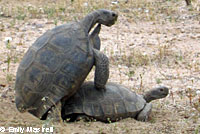 |
| Mating male and female in San Bernardino County © Emily Mastrelli | ||
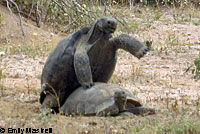 |
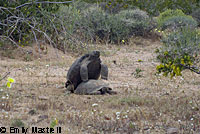 |
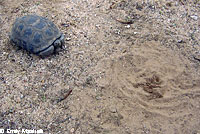 |
| Mating male and female in San Bernardino County © Emily Mastrelli | This is the same San Bernardino County mating female seen above after mating and after the male has left the scene. You can see semen and marks in the sand from the encounter. © Emily Mastrelli |
|
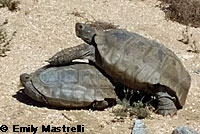 |
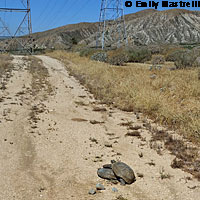 |
|
| Mating male and female in Riverside County © Emily Mastrelli | ||
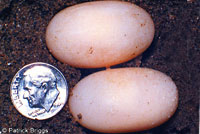 |
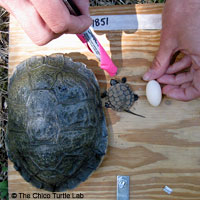 |
|
| Western Pond Turtle Eggs, © Patrick Briggs | Western Pond Turtle Life Cycle: Adult, Juvenile, and Egg, Butte County. © The Chico Turtle Lab |
|
| Turtle Behavior Research | ||
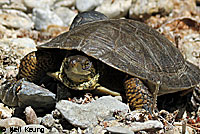 |
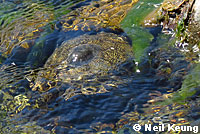 |
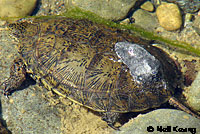 |
| Western Pond Turtles with transmitters attached to their shells. An antenna with a radio receiver that can find these transmitters is used to find the turtles and track their movement in order to study their behavior. Transmitters on females like the one on the far left are placed on the side of the shell to prevent obstacles to males during breeding. The transmitters are removed without damaging the shells when research is completed. © Neil Keung Research covered under Federal permits, State Parks permits, and Open Space Authority permits. |
||
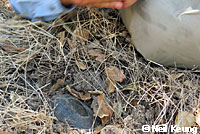 |
||
| This Western Pond Turtle travelled away from a dry creek in summer to bury itself in an upland location above the creek in oak woodland habitat where it will stay until the following Spring. The turtle was found by tracking the transmitter which you can see attached to its shell. © Neil Keung Research covered under Federal permits, State Parks permits, and Open Space Authority permits. |
||
| Turtle Tracks and Signs | ||
 |
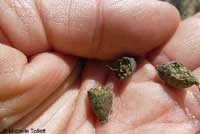 |
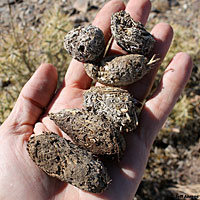 |
| Desert Tortoise scat © Arthur Davenport |
Desert Tortoise scat © Michelle Tollett |
A handful of Desert Tortoise scat © Jeff Ahrens |
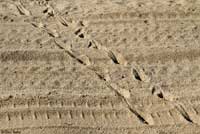 |
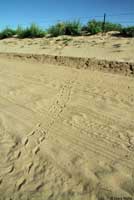 |
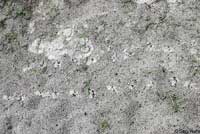 |
| Desert Box Turtle tracks | Gopher Tortoise tracks | |
 |
 |
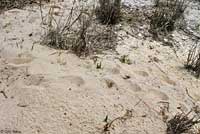 |
| This turtle shell was seen at a wetlands in Travis County, Texas. | Texas Tortoise Shell seen in a clump of cactus in south Texas. | Gopher Tortoise tracks |
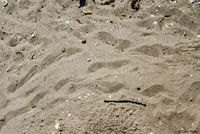 |
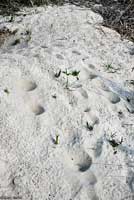 |
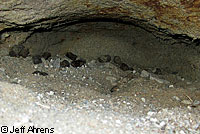 |
| Gopher Tortoise tracks |
Gopher Tortoise tracks | A Desert Tortoise burrow with lots of scat and some eggshell fragments © Jeff Ahrens |
| Parasites | ||
 |
 |
 |
| Intergrade Western/Midland Painted Turtle with a leech on its shell, photographed near Chicago. | ||
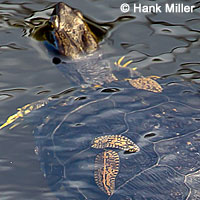 |
||
| This Red-eared Slider from Napa County has three large leeches on its shell. Leeches often attach themselves to the fleshy parts of turtles but they can also suck blood from the scutes on the shell. © Hank Miller |
||
| Miscellaneous Turtle Observations | ||
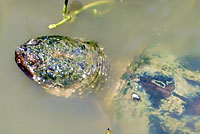 |
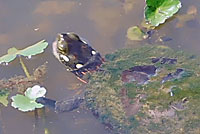 |
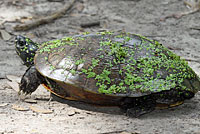 |
| Snapping turtles have a reputation for being dangerous meat-hungry beasts that bite off the legs of ducks, but here we see one on a hot summer day in a wetlands in Virginia slowly trying to eat small leaves. | Many wild turtles have algae growing on their carapace, or shell. This Eastern Painted Turtle is covered with it. This might help the turtle stay camouflaged, but according to pet turtle keepers, too much algae on the shell can cause health problems. | Adult, covered with plant matter, just after leaving pond. |
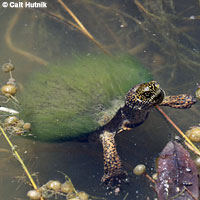 |
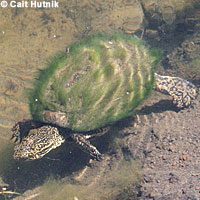 |
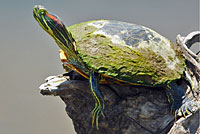 |
| Two adult Southwestern Pond Turtles with shells covered with algae. © Cait Hutnik |
Red-eared Slider with algae on shell | |
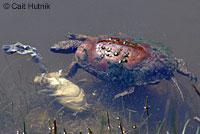 |
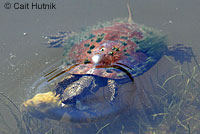 |
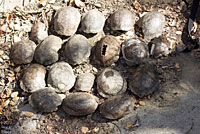 |
| Adult Southwestern Pond Turtle feeding on the carcass of a Bullhead Catfish in Santa Clara County. Several turtles were observed circling the dead catfish, tearing off pieces to eat. © Cait Hutnik |
These Southwestern Pond Turtles from the Santa Monica Mountains in Los Angeles County all died during the 2015 drought. © Huck Triggs | |
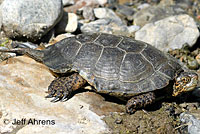 |
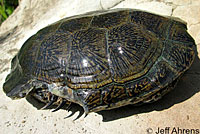 |
|
| Adult Southwestern Pond Turtle with damage to its carapace, Orange County © Jeff Ahrens. Animal capture and handling authorized under SPC or specific authorization from CDFW. |
||
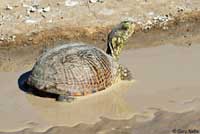 |
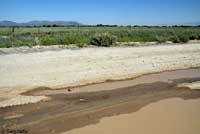 |
|
| Desert Box Turtle taking advantage of a rail pool in a dirt road formed during the summer monsoons in the Arizona desert. | ||
 |
 |
|
| Adult Western Painted Turtle, molting scutes on its shell, Larimer County, Colorado, © Janet Hardin As a turtle grows, the shell grows with it and the individual scutes are shed annually. This helps the shell from getting too thick and heavy and helps to remove algae and other growths that occur from living in the water. |
||
Return to the Top
© 2000 -
